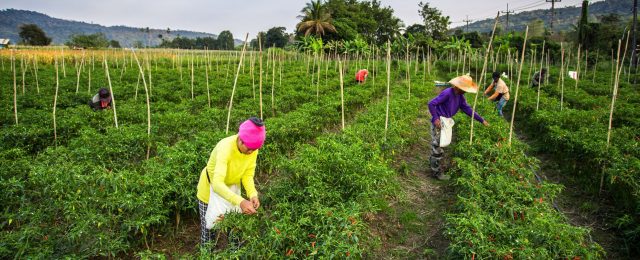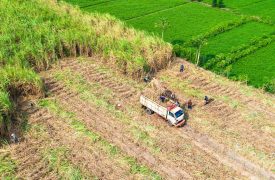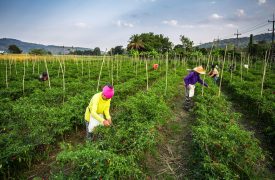See 2021 Food and Agriculture Benchmark
Social | Leading practices from the 2021 Food and Agriculture Benchmark

What does good performance look like?
This is a question our food and agriculture team often receives from companies, allies and other stakeholders. Taking a holistic approach, companies in the benchmark are assessed across the measurement areas of governance and strategy, environment, nutrition and social inclusion. Companies are expected to set policies, strategies, targets or take specific action on each topic within these areas, all of which have specific (data) requirements. These requirements are based on societal expectations, existing and widely accepted reporting standards, best available science and guidance from experts, including research on existing initiatives and current practices. Translated into indicator scoring guidelines our methodology lays bare these requirements and why companies need to take action on each topic.
Food systems have major impacts on our health, society and the environment. Private sector action is crucially needed to address these challenges. The methodology for the Food and Agriculture Benchmark serves as a roadmap to guide companies through this transformation by identifying the areas of attention alongside clear expectations for companies. The 2021 Food and Agriculture Benchmark has shown that all companies are on a journey and stepping up efforts is needed even for the best performers. This publication aims to shine a light on leading practices on key topics that we have found in the benchmark. It provides a more practical understanding of what ‘good’ performance looks like, across topics as well as sectors and companies.
Below you find an overview of selected examples, chosen to illustrate leading practices across each measurement area and topic. These examples are intended to inspire and initiate conversations with companies on their performance. It is not an exhaustive list, but one that will be updated and supplemented moving forward. In addition, the benchmark’s data set provides a full overview of company scores against all 45 indicators, beyond the leading practice examples highlighted below.
Social inclusion
The private sector can have a transformational impact on people’s lives, both as a creator of jobs and a producer of goods and services that people use. At the same time, the private sector is expected to integrate a responsible approach to social issues into its business activities. This includes respecting human rights, providing and promoting decent work and acting ethically. In the food and agriculture system, issues and concerns such as decent livelihoods for all actors along the value chain and land rights also come into play. This measurement area assesses how companies in different industries along the value chain ensure the social inclusion of workers and communities linked to their operations and supply chains.
Respect for human rights
Through WBA’s core social indicators, the 2021 Food and Agriculture Benchmark assessed whether companies commit to respect human rights and labour rights in their operations, pass this expectation up their supply chains, and undertake the first steps of human rights due diligence to become aware of and address human rights risks in their operations and supply chains.
Living wage
The World Bank estimates that over a quarter of the world’s workers were employed in agriculture in 2019. Food is thus not only a necessity of life, but also a source of livelihoods for millions. However, many people working in the agricultural sector struggle to get by and two-thirds of the global population living below the poverty line are farmers, workers in agriculture and their dependants. The sector is characterised by informal and seasonal employment and in many situations the pay received for a standard workweek or the sale of agricultural products it not sufficient to afford a decent standard of living.
Farmer and fisher productivity and resilience
In addition to the provision of living wages for salaried workers, companies have a responsibility to ensure a decent livelihood for the many self-employed farmers and fishers that supply them. Similarly to living wage, these farmers and fishers should receive a living income. In other words, the income they receive for their products must be sufficient to cover basic needs and some discretionary income for a family.
Health and safety of vulnerable groups
The agricultural sector is one of the most dangerous in terms of rates of work-related fatalities, non-fatal accidents and occupational diseases, the burden of which falls disproportionally on workers in developing countries. Vulnerable groups such as women, seasonal workers and children are particularly exposed to health and safety risks.
Conclusion and next steps
Leading practice examples are meant to inspire and instigate conversations with companies on their performance. With changing global contexts and (scientific) developments and progress around the understanding of many of the relevant topics in the benchmark, leading practices will change over time. The benchmark and its methodology will reflect this changing environment in which food and agriculture companies operate. Our methodology will evolve over time, as will the benchmark. We invite our allies, companies and other stakeholders to join the conversation or reach out to the food and agriculture team to keep abreast of our activities and next steps.


